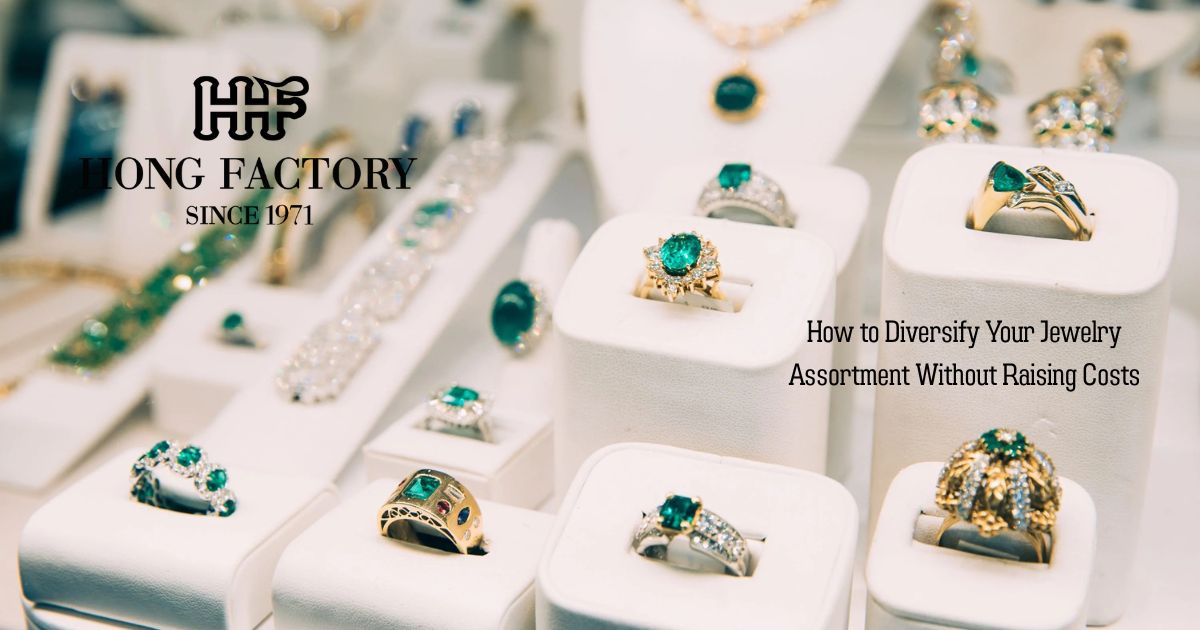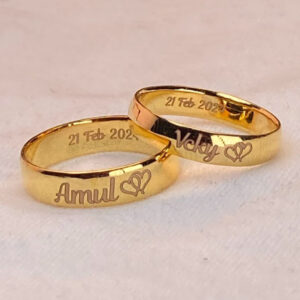How to Diversify Your Jewelry Assortment Without Raising Costs
In a market where variety drives engagement and customer retention, jewelry businesses often face a major challenge: how to expand their product offerings without increasing production costs. The good news? With smart planning and strategic design, it’s entirely possible to diversify your assortment without breaking the budget.
Here’s how to make your jewelry catalog feel fresh, full, and flexible without raising your bottom line.
How to Diversify Your Jewelry Assortment Without Raising Costs

1. Start with Modular Design Foundations
Instead of creating brand-new pieces for every SKU, use modular elements that can be mixed and matched across designs.
Strategies:
- Use a single pendant base with interchangeable stones or chains
- Create one ring shank design with multiple center setting variations
- Offer the same earring silhouette with different finishes or stones
Why it works: Small design tweaks give the illusion of variety while keeping production efficient.
2. Reimagine Best-Sellers with Seasonal Styling
Rather than designing from scratch, refresh your top-performing designs using seasonal influences.
Ideas:
- Replate a silver best-seller in rose gold for spring
- Add birthstones or colored accents for holiday versions
- Introduce texture variants: hammered, brushed, high-polish
Result: Newness without new molds or prototypes.
3. Use Finish & Plating to Create Tiered Options
Offer multiple finishes of the same design to appeal to different market segments.
Example:
- Polished sterling silver for your core audience
- Rhodium-plated for anti-tarnish appeal
- Gold vermeil for a premium-tier price point
Benefit: You diversify the perceived offer while using the same design and mold.
4. Create Coordinated Sets Using Existing SKUs
Turn individual items into matching or complementary sets to create added value.
Bundle Ideas:
- Ring + pendant with the same gemstone cut
- Earrings + bracelet in matching motifs
- Trio gift boxes featuring 3 coordinating studs
Why it’s effective: It increases average order value and positions your brand as curated without making new pieces.
5. Leverage Multi-Wear and Convertible Designs
Multi-functional pieces reduce SKU count while offering styling flexibility.
Examples:
- A chain with adjustable length for layering
- Earrings that convert from studs to drops
- Brooches that double as pendants
Outcome: One item, multiple customer use cases.
6. Design Around Universal Shapes and Motifs
Focus on shapes that have broad appeal across age groups and cultures.
Popular motifs:
- Hearts, stars, leaves, and moons
- Geometric shapes (circles, bars, triangles)
- Minimalist symbols with spiritual or emotional value
These motifs reduce design risk while increasing styling versatility.
7. Offer Customization Without Complex Production
You can personalize offerings without retooling every time.
Ideas:
- Engraving options (initials, dates, coordinates)
- Choose-your-stone configurations with pre-set bezel sizes
- Modular charm systems for bracelets or necklaces
This taps into the personalization trend without the cost of custom molds.
8. Repurpose Components Across Categories
Use the same components in different formats to expand your collection.
For example:
- A pendant motif becomes an earring dangle or charm
- A ring top becomes a cufflink head or brooch centerpiece
- A chain clasp becomes a design element for layering necklaces
This increases perceived variety without increasing sourcing complexity.
9. Use Photography and Merchandising to Tell a Variety Story
Visual storytelling plays a major role in how consumers perceive assortment.
Techniques:
- Style the same necklace 3 ways (casual, formal, layered)
- Group same-shape items into collections (e.g., “Luna Collection”)
- Use model shots and flat-lays to create visual distinction
A small physical assortment can feel larger with smart presentation.
10. Maximize Ready Stock Resources from Suppliers
If working with a manufacturer, explore their existing ready stock inventory.
How to use it:
- Curate pieces that align with your brand aesthetic
- Mix ready stock with OEM designs to expand your offering
- Use samples from their catalog to test new categories (brooches, men’s styles, etc.)
Advantage: Fast variety, minimal investment.
Smart Variety, Strategic Spending
You don’t need hundreds of designs to offer a compelling, diversified catalog. By rethinking how you use your existing resources and leveraging thoughtful product planning—you can grow your offering and appeal to more customers without growing your costs.
In a world where flexibility and value win, it’s not about having more.It’s about making more of what you already have.




